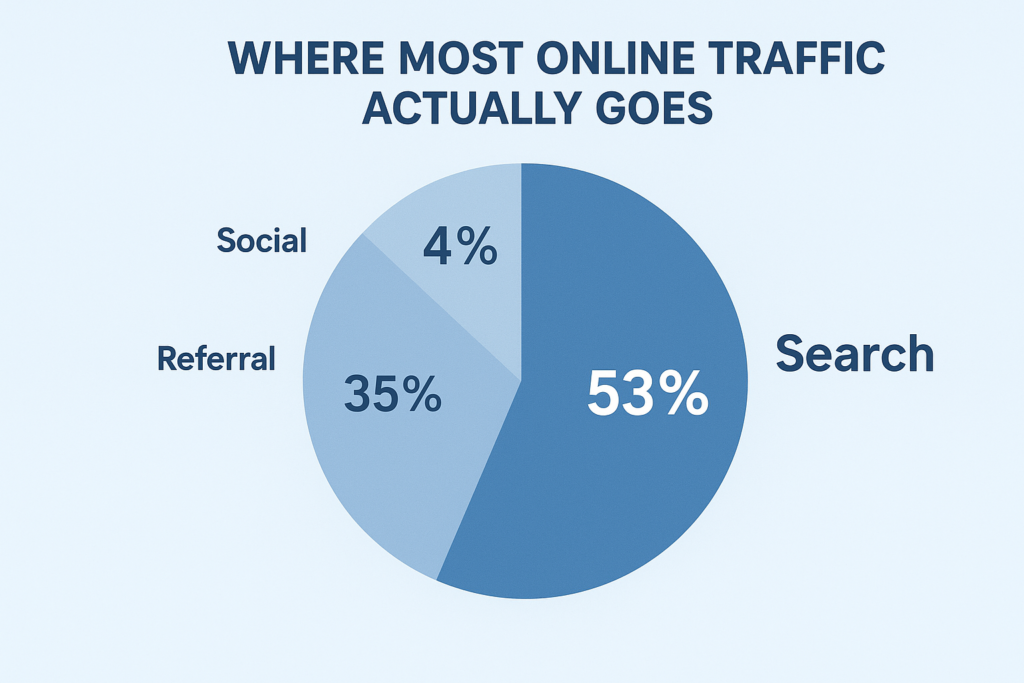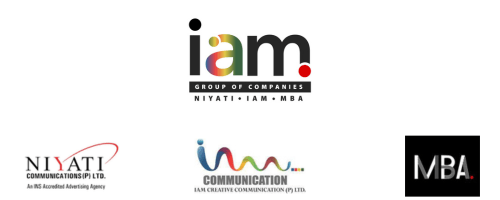Index / Table of Contents
A Quick Reality Check About Visibility
Why SEO Gets Chaotic for Most Businesses
White Label SEO: The Simplest Explanation
Who Should Actually Use White Label SEO
In-House SEO vs. White Label SEO
What a Strong White Label SEO Partner Really Does
How to Use a White Label SEO Agency the Smart Way
Common Missteps Businesses Make with White Label SEO
Signs You Picked the Wrong Partner
What Happens When You Get It Right
Final Takeaway
1. A Quick Reality Check About Visibility
Everyone wants “visibility”.
Very few know what it actually takes to be discovered.
You can post every day, show up on Reels, run the occasional ad, and still feel…invisible. Not because your brand isn’t good. But because people simply never reach you in the first place.
Most online journeys still start with one boring-looking action: someone types a problem into a search bar. And if you are not there, high enough, often enough, you don’t exist for them. That’s the hard truth most brands learn a little too late.

2. Why SEO Gets Chaotic for Most Businesses
On paper, SEO sounds simple: rank higher, get traffic, get sales.
In practice, it feels like you’re trying to assemble a plane while it’s already flying.
Algorithms are changing every few months. On-page content, keywords, search intent. Technical glitches you didn’t know existed. Backlinks, audits, schema, Core Web Vitals, and twenty different dashboards with numbers that don’t match.
So, most teams do one of three things:
Patchwork it with random freelancers and “quick fixes”.
Ignore SEO.
Do the bare minimum and hope for the best.
The 5 biggest challenges people underestimate
1. How long does SEO actually take to show clean results?
2. How often does search behaviour change in your niche?
3. How easily can technical issues quietly kill your visibility?
4. How much consistent content do you need to win competitive keywords?
5. How hard it is to build legit authority without a system.
3. White Label SEO: The Simplest Explanation
Think of a theatre production.
You’re the main act: facing the audience, building relationships, closing deals, growing your brand. White label SEO is the backstage crew – lights, sound, tech, timing – making sure the show actually works.
They plan, execute, and optimize your SEO under your brand name. Your client sees you. Your logo. Your reports. Meanwhile, an expert team is quietly doing the heavy lifting in the background.
It exists for one reason: so you don’t have to build a full SEO department just to offer SEO-level outcomes
4. Who Should Actually Use White Label SEO
White label SEO isn’t for everyone. But it’s a game-changer for:
- Agencies that want to add or scale SEO without hiring 3–5 specialists.
- PR / branding consultancies that want to move from “top-of-funnel awareness only” to “awareness + discoverability”.
- Solo marketers or small teams who can win strategy and client trust but can’t sit and do the implementation all day.
- Businesses that want SEO results without dealing with full-time salaries, training, and attrition.
Anywhere you want the output and the expertise, but not the headache of building and managing an in-house team, white label fits.
5. In-House SEO vs. White Label SEO
In-house and white label both have a place. The game is fit.
Risk: If your only SEO person quits, you start from zero. With a partner, continuity is baked in.
Costs: In-house means salaries, tools, and training. White label converts all that into a predictable service fee.
Speed: Hiring a solid SEO team can take months. A white label team is plug-and-play.
Talent diversity: One hire will not be a strategist + writer + technical dev + link builder. A white label team usually is.
Scalability: Got 3 new clients in 2 weeks? In-house will struggle. White label can ramp capacity much faster.
6. What a Strong White Label SEO Partner Really Does
A good partner is not just “doing keywords” for you.
They:
- Build a strategy that respects your niche, competition, and positioning.
- Handle on-page—content structure, keywords, internal links, meta, and UX.
- Clean up technical roadblocks so search engines can actually read your site.
- Work on authority building with relevant, safe backlinks and mentions.
- Track analytics, show you what’s working, and adjust without drama.
- Deliver consistently for months, not just 4 weeks of enthusiasm.
Things a great partner will NEVER do
- Promise you “#1 in 30 days” for every keyword under the sun.
- Hide behind jargon when numbers aren’t moving.
- Spam low-quality backlinks that might burn your domain later.
- Send 20-page reports no one reads, with no actual insight or next steps.

7. How to Use a White Label SEO Agency the Smart Way
If you treat them like a nameless vendor, you’ll get mediocre results.
If you treat them like a quiet extension of your team, everything changes.
Practical steps:
- Define your goals clearly: traffic, leads, specific product pages, geography—be specific.
- Share your brand voice + boundaries: what you say, what you never say, who you serve, who you don’t.
- Plug them into your workflow: Slack, Notion, Drive, weekly stand-ups—whatever you use, let them live inside it.
- Use reports as your secret weapon: repurpose wins into client updates, pitch decks, and case studies.
- Let them go deep while you lead: you own direction, messaging, and client relationships; they own SEO depth.

8. Common Missteps Businesses Make with White Label SEO
Most failures are not about “bad SEO”. They’re about bad collaboration.
- Under-communicating: Zero context, vague briefs, no clarity on priorities.
- Expecting overnight results: Treating SEO like an ad campaign with 7-day ROI.
- Not sharing client context: Hiding brand pain points, historical data, or constraints.
- Choosing purely on price: “Cheapest provider” often becomes “most expensive mistake”.
Quick fixes for each mistake
Evaluate partners on clarity, process, and transparency—not just cost.
Set a simple monthly review rhythm.
Agree on realistic timelines (3–6–12 months).
Share client goals, past attempts, and sensitive industries.
9. Signs You Picked the Wrong Partner
Red flags are usually obvious, but we tend to excuse them.
- Slow, inconsistent response.
- Vague or secretive about what they’re actually doing.
- No clear strategy—just random tasks.
- Fluffy reports with vanity metrics only.
- No measurable lift in visibility or quality traffic after a reasonable window.
Red flags you should never ignore
If you feel like you’re constantly “chasing” your own partner, or you can’t confidently explain to your client what’s being done, that’s a problem.
10. What Happens When You Get It Right
When the fit is right and the system is set, things get lighter.
You pitch new clients with more confidence because you know you can actually deliver.
Your operations feel smoother because you’re not firefighting SEO tasks every week.
You start seeing reliable month-on-month growth instead of random spikes.
Client retention goes up because they can see progress.
Your brand’s visibility stops being a lucky accident and becomes a system.
Final Takeaway
Here’s what actually matters: visibility is not about posting more; it’s about being discoverable where intent already lives.
If you’re tired of juggling SEO on the side while running the whole show, white label isn’t a shortcut; it’s a smarter way to expand. You stay in the spotlight. Let someone solid handle the backstage.


